The Mid-Autumn Festival, known as Tet Trung Thu, is a cherished celebration in Vietnam that captivates hearts and minds alike. It occurs on the 15th day of the 8th lunar month, which typically falls between September and October in the solar calendar. This festival is particularly special for children, who eagerly await this enchanting night filled with colorful lanterns, delectable mooncakes, and heartwarming family gatherings.
Watch the video summarizing the article “Mid-Autumn Festival in Vietnam: Traditions, Mooncakes & Lanterns”
Beyond its vibrant festivities, Tet Trung Thu embodies the values of gratitude, unity, and the celebration of nature’s bounty, reflecting the cultural richness of the Vietnamese people. As families gather to appreciate the beauty of the full moon, they also honor traditions that have been passed down through generations, encapsulating a profound sense of belonging and joy.
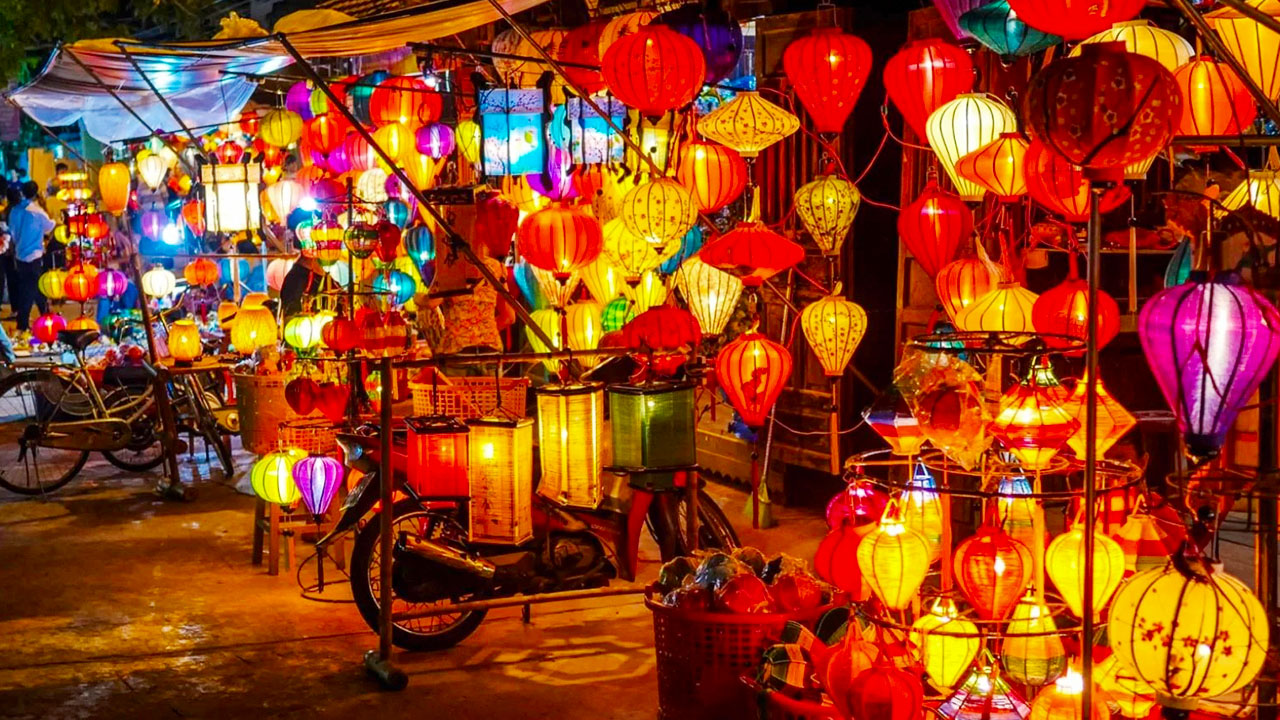
The Mid-Autumn Festival is not just a festival; it’s a poignant reminder of familial bonds and cultural heritage that makes Vietnam unique. The atmosphere is alive with laughter, music, and the sight of joyful children parading with their lanterns, infused with dreams and stories that create lasting memories. As we explore the festival’s nuances, we will delve into its historical origins, cultural significance, and the delightful traditions that shape this vibrant occasion.
Understanding the Significance of the Mid-Autumn Festival in Vietnam
The Mid-Autumn Festival holds immense significance in Vietnamese culture, primarily symbolizing family unity and harvest celebration. As one of the most cherished festivals in Vietnam, it marks the end of the harvest season, during which families express gratitude to their ancestors and the land for providing them with bountiful crops. The festival creates a bridge between the past and the present, allowing people to honor their lineage while fostering a sense of togetherness.

Childhood is at the heart of Tet Trung Thu. It is a festival designed for children, who are seen as the bearers of cultural traditions and the future of Vietnamese society. Dressed in colorful attire, children parade the streets with lanterns, chant folk songs, and partake in games that connect them with their cultural roots. The festival activities encourage family bonding and the transmission of traditions, emphasizing the values of love, care, and unity.
Moreover, the festival is a time for reflection and gratitude, compelling communities to acknowledge the blessings of the past year while eagerly anticipating future prosperity. As families gather around the glowing moon, they share stories, engage in traditional rituals, and savor the sweet delights that represent the abundance of life. The Mid-Autumn Festival is thus a culturally rich tapestry interwoven with familial love, gratitude for nature’s gifts, and the joy found in community.
Historical Origins
The origins of the Mid-Autumn Festival in Vietnam are a fascinating blend of history and mythology. The festival has deep roots tracing back over a thousand years, beginning with traditions observed in ancient China, where emperors worshipped the moon amidst agricultural celebrations. The festival is believed to have permeated Vietnamese culture under the Ly Dynasty, when the moon was celebrated as a symbol of abundance and harmony.

One historical tale tells of how the festival was established to honor the Dragon Deity, believed to bless the land with good weather and fruitful harvests. Over time, the creation of mooncakes emerged, symbolizing unity and completeness, representing how families would come together to express gratitude. Another vivid representation of moon-worship practices can be found on the ancient Ngoc Lu bronze drum, where images of moon sightings convey the significance of lunar reflections in agricultural life.
Unlike other cultural celebrations, Vietnam’s Mid-Autumn Festival distinctly emphasizes children and families rather than formal rituals, showcasing the influence of traditional folk stories and community spirit. The myths surrounding the festival, such as stories of Cuội (a man who flew to the moon), further embed cultural values within its history.
As such, the Mid-Autumn Festival transcends its historical origins; it thrives as a living tradition deeply embedded in Vietnamese society. With its historical significance at the forefront, the festival appears as a celebration of life itself, facilitating joyous gatherings that honor cultural heritage and agricultural cycles.
Cultural Importance in Vietnam
The cultural importance of the Mid-Autumn Festival in Vietnam is profound, merging elements of familial devotion, communal harmony, and celebrations of nature. It serves as an annual reminder of the importance of agricultural cycles, aligning with the rhythms of rural life. As the festival coincides with the full moon, it highlights the harmony between humanity and nature themes that resonate deeply within Vietnamese culture.
Families participate in various customs to venerate their ancestors while expressing their hopes for future prosperity. Offering food, particularly mooncakes, fruits, and other delicacies, embodies a physical manifestation of respect and gratitude for those who came before. As children actively engage in these traditions, they learn the values of remembrance and appreciation, cultivating a sense of identity that elevates the importance of family in their lives.
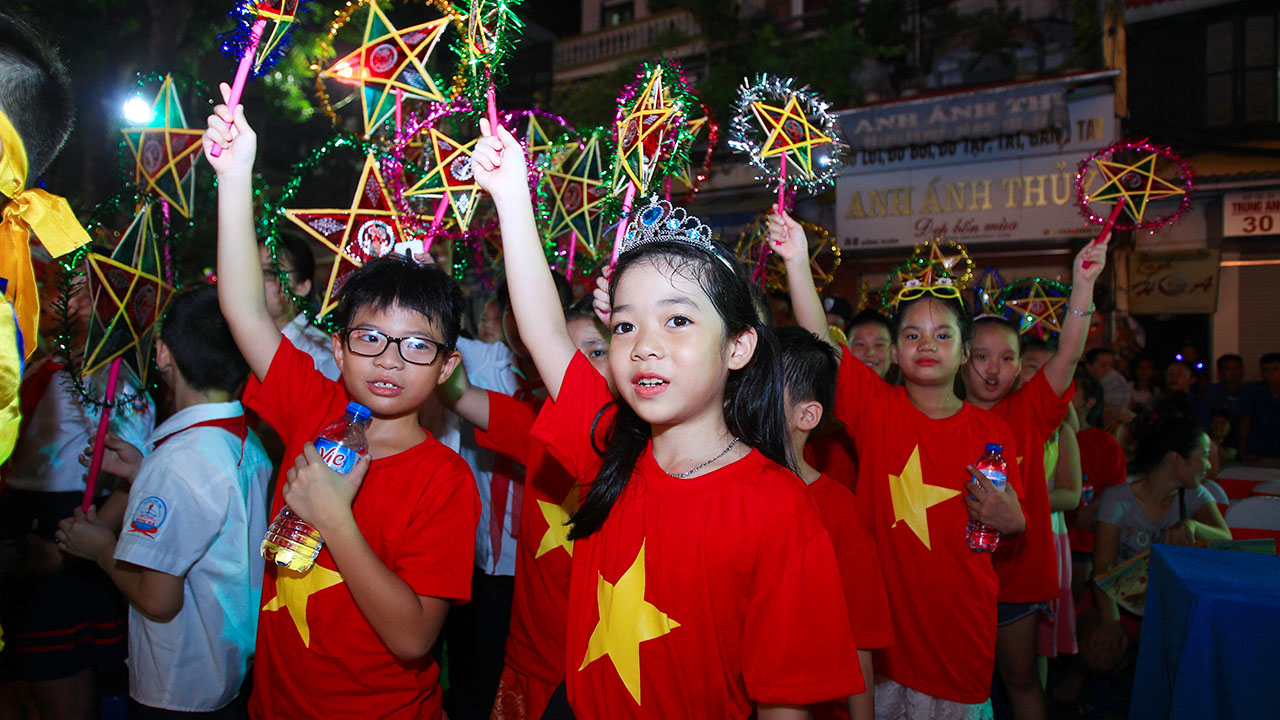
Further underlining the cultural significance of Tet Trung Thu is its function as a community-building event. The lively atmosphere created during the festival encourages social interaction and collective participation, including colorful lantern parades and lion dances, which are deeply rooted in local culture. The inclusive nature of the festival fosters friendship and unity among neighbors and families, bridging gaps between generations.
Interestingly, social values are also embedded in the culinary aspects of the celebration. The variety of mooncake flavors ranging from lotus seed paste to sweet red beans reflects the richness of local produce and the ingenuity of Vietnamese culinary arts. The enjoyment of these traditional treats is a shared experience that reinforces social ties.
Overall, the Mid-Autumn Festival is more than a simple gathering; it encapsulates cultural identity, community values, and traditional agricultural practices into a celebration that endures through time.
Comparison with Other Countries’ Celebrations
The Mid-Autumn Festival is celebrated across various Asian countries, each putting a distinct cultural spin on the festivities. In China, the festival is known as the Moon Festival, where the traditions of moon worship and family reunifications are prominent. Similar to Vietnam, Chinese families also enjoy mooncakes, but the emphasis is often placed on formalized traditions, such as offering sacrifices to ancestors. Lunar festivities in China involve larger public displays and more elaborate arrangements, with ancestors’ altars being elaborately decorated.

In contrast, during Vietnam’s Tet Trung Thu, the focus is primarily on children’s enjoyment and the light-hearted joy of togetherness. Children’s activities, such as lantern parades and traditional games, dominate celebrations, making this festival particularly unique. The lion dance, for instance, reflects local beliefs in warding off evil spirits, serving not only as entertainment but also as a cultural touchstone.
Countries such as South Korea celebrate the Mid-Autumn Festival as Chuseok, a significant harvest festival that emphasizes family gatherings and traditional food. While mooncakes exist there, the festival revolves around the preparation of songpyeon, rice cakes filled with sweet or savory fillings, emphasizing the season’s agricultural bounty.

In Japan, although the O-tsukimi or moon-viewing festival is less commercialized, it honors the moon’s beauty through simple family gatherings and serves mochi as a symbol of reverence towards nature. The differences underscore the adaptability of similar harvest celebrations while highlighting varying cultural values tied to family, reverence, and socio-economic contexts.
Ultimately, while the Mid-Autumn Festival shares similarities across various cultures, Vietnam’s celebratory approach uniquely prioritizes children, familial love, and community participation, reflecting the heartwarming essence of Vietnamese customs.
Connection to Family and Children
The Mid-Autumn Festival serves as a bridge that connects families, emphasizing the importance of bonds between generations. The celebration is meticulously designed to provide an engaging environment for children, who are often the star attractions of the event. The festival operates on the premise that the happiness of children nourishes familial love and strengthens community ties.

During Tet Trung Thu, parents immerse themselves in joyful activities with their children, such as making lanterns and participating in lion dances. By encouraging children to express themselves creatively whether through crafting their own lanterns or showcasing their talents in communal performances the festival fosters a sense of pride and reinforces the significance of cultural traditions. As children parade in their homemade lanterns, the laughter and excitement erupting from their joyous faces become emblematic of the spirit of the festival.
Moreover, storytelling during this time adds depth to the connections shared among families. The legend of Cuội, who went up to the moon with a magical tree, is often recounted to children to inspire ambition and curiosity. As parents narrate folk tales that intertwine lessons of perseverance and love, they contribute to the preservation of cultural narratives while simultaneously teaching values that transcend time.
In the midst of festivities, the act of collective moon worship mirrors the foundations of family unity. Gathered together under the moonlight, families share food, stories, and dreams, facilitating a collective experience of gratitude and reflection. Such moments form rich memories that children carry into adulthood, shaping their understanding of identity and belonging within their cultural framework.
Ultimately, the Mid-Autumn Festival becomes more than a holiday; it transforms into an emotional tableau where familial love, teaching moments, and cultural pride come alive. It is an annual reminder that while tradition is preserved, the essence of family remains at the heart of all celebrations.
Agricultural Aspects
Historically, the Mid-Autumn Festival underscores the close relationship between Vietnamese culture and its agricultural roots. Celebrated during the harvest season, it embodies sentiments of gratitude toward the land and its resources. The festival, which falls during the time of the full moon, symbolizes abundance and fertility, connecting the lunar calendar with agricultural practices.
As families gather to express thanks for the fruitful harvest, they engage in rituals that highlight the significance of agriculture in their daily lives. For Vietnamese farmers, the festival also marks the transition from a demanding harvest season to a time of family reunion and thanksgiving. It is a collective acknowledgment of the hard work invested in cultivating crops and reaping the benefits that the land generously provides.
Traditional foods, particularly mooncakes, embody the agricultural bounty of Vietnam. Ingredients sourced locally, such as lotus seeds, beans, and fruits, come together to create a delectable treat symbolizing completeness and abundance. The preparation and sharing of mooncakes integrate community spirit with agricultural appreciation, as families honor their ancestral ties to the land.
In rural regions, the Mid-Autumn Festival reveals a more profound connection with agricultural customs. Families often set up altars outdoors to honor earth deities, placing offerings of fruits, mooncakes, and sweets to express respect for the land that sustains them. Communities come together to celebrate, fostering a sense of belonging and mutual support rooted in their shared agricultural heritage.
Ultimately, the festival exemplifies how cultural practices, agricultural prosperity, and community ties are interwoven. The Mid-Autumn Festival becomes a celebration of life, reinforcing respect for the land, appreciation for hard work, and nurturing values of community that thrive across generations.
Key Traditions During the Festival
The Mid-Autumn Festival is rich with traditions that encapsulate its cultural essence in Vietnam. From vibrant mooncakes to colorful lantern parades, these practices create a delightful atmosphere, promoting family unity and community spirit during this special time of year. Each tradition holds meaning and significance, building a festive experience that resonates through inter-generational connection and celebration.
Mooncake Customs
One of the most iconic aspects of the Mid-Autumn Festival is the tradition surrounding mooncakes. These rich pastries have long been a staple of Tet Trung Thu, symbolizing unity and completeness. Typically made from a smooth outer layer of dough filled with various ingredients such as lotus seed paste, red bean, or even mixed nuts, mooncakes are both a culinary treat and a cultural statement.
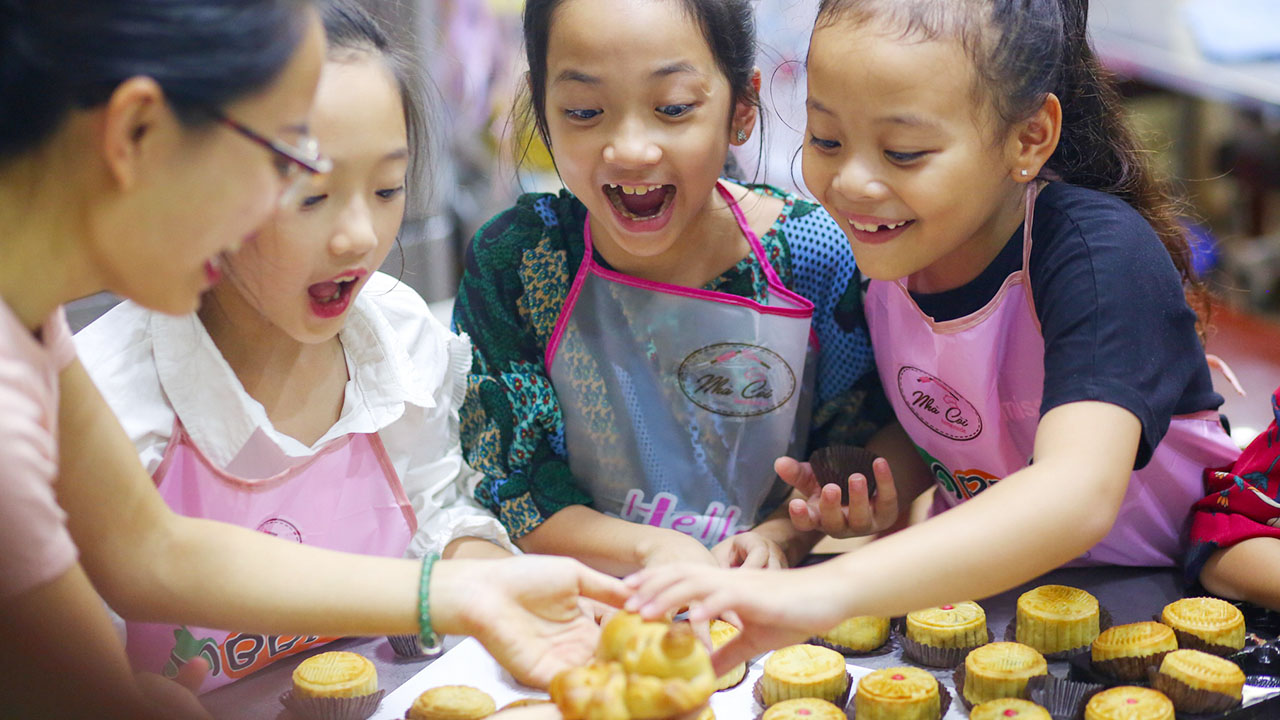
Families often prepare lavish trays of mooncakes to present to their ancestors during worship rituals, signifying respect and gratitude. The intricate designs adorning mooncakes, ranging from floral patterns to zodiac animals, showcase the artistry and craftsmanship behind this beloved tradition. Sharing mooncakes within families and among friends has become an essential practice, where gifting these delicacies serves as expressions of goodwill, connections, and shared experiences.
Modern developments have seen an increase in innovative flavors, catering to contemporary tastes. From salted egg yolk mooncakes to ice cream varieties, these creative renditions push the boundaries of tradition while remaining inherently tied to the festival’s essence. The growing popularity of mooncakes, particularly among younger generations, reflects a love for rekindling tradition while adapting to modern tastes, capturing a genuine spirit of innovation that characterizes contemporary Vietnamese culture.
Lantern Parade and Crafts
Lanterns are synonymous with the Mid-Autumn Festival and play a pivotal role in its celebrations. The tradition of lantern-making and parading them through the streets is one of the festival’s highlights, illuminating the night with vibrant colors and shapes. Kids immerse themselves in crafting homemade lanterns, ranging from simple star designs to intricate representations of animals and mythical creatures.
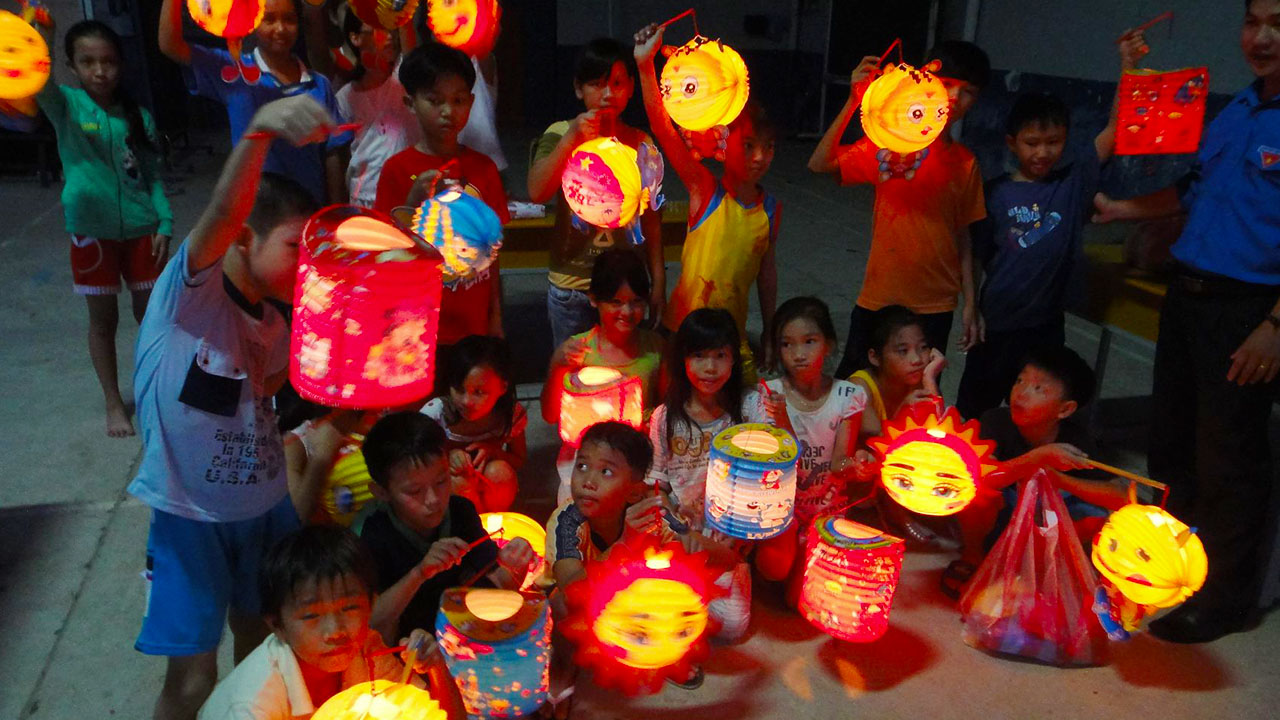
The lantern parade allows children to showcase their creations while participating in an evening filled with joy and excitement. As families wander the streets, the echoing laughter of children reverberates in tune with the rhythmic melodies of traditional songs. Lanterns have become a medium for storytelling, representing hopes and dreams for the future, significantly weaving a communal experience into the cultural fabric of Tet Trung Thu.
The lanterns symbolically represent guiding lights that illuminate paths, not only physically but also metaphorically as beacons of hope and joy. This vibrant spectacle creates a sense of unity among participants, as everyone carries their lanterns together under the moonlight, signifying harmony and shared culture.
In addition to the lantern parades, families often engage in crafting activities to prepare for the event. Workshops teaching lantern-making techniques become opportunities for communal bonding, where families gather to share skills and stories. This integration of crafting into the festival further roots the Mid-Autumn Festival in a creative, family-oriented atmosphere, ensuring that the tradition persists for generations to come.
Lion Dance Performances
Another spectacular aspect of the Mid-Autumn Festival is the lion dance, a vibrant tradition believed to bring good luck and prosperity. As teams of skilled performers don colorful lion costumes and expertly mimic the movements of the majestic animal, they bring forth the energy and excitement that envelop the streets.
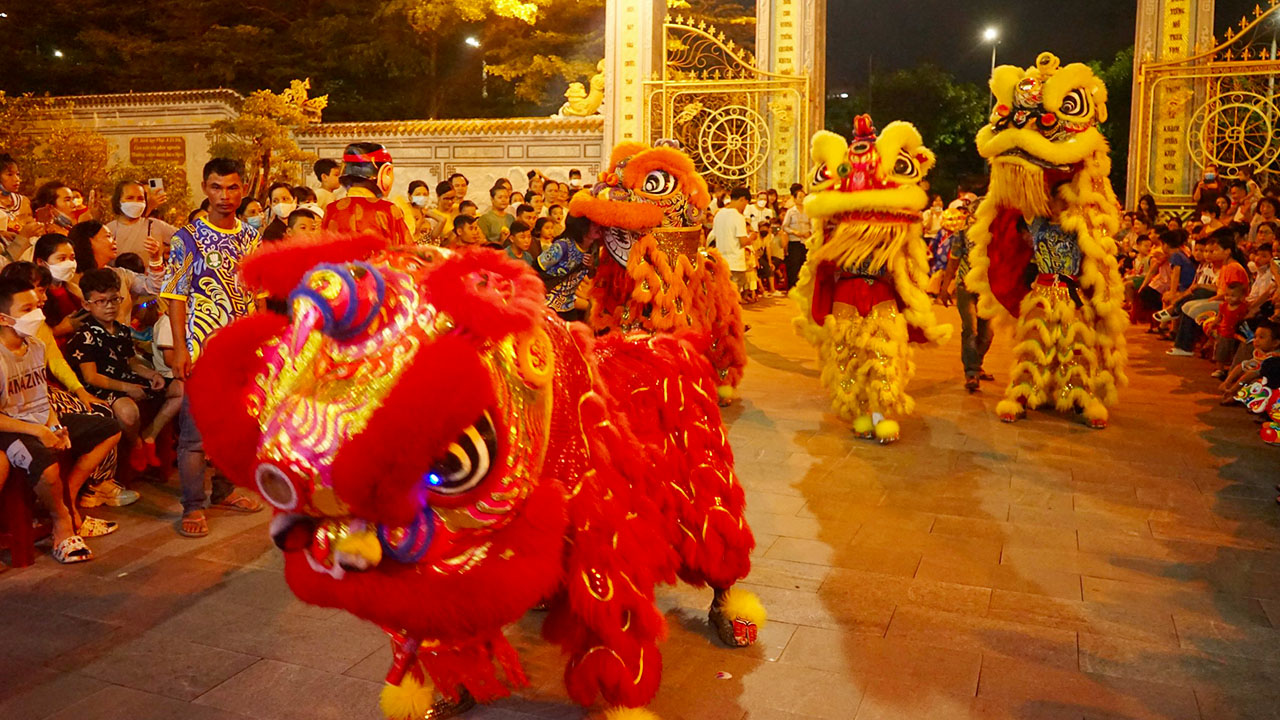
The lion dances are typically accompanied by the striking rhythm of drums and the vibrant sound of cymbals, creating a lively atmosphere that captivates audiences of all ages. The performance represents the combined efforts of the dancers as they weave their way through crowds, engaging with onlookers, which further enriches the festive spirit. The lion dance is a form of visual storytelling, encapsulating themes of resilience, courage, and triumph values that resonate deeply within the fabric of Vietnamese culture.
During the festival, lion dance displays can be witnessed throughout towns and cities, drawing crowds who gather to witness this exhilarating art form. Whether performed by skilled professionals or enthusiastic children, each performance serves as an occasion for community bonding and shared excitement. This artistry illustrates how respect for tradition can transcend into lively modern interpretations, reinforcing the deep-rooted cultural significance that follows the Mid-Autumn Festival.
Moon Worship Practices
Moon worship is a key custom of the Mid-Autumn Festival, signifying reverence towards nature and the acknowledgment of its cycles. Families often gather outdoors to admire the full moon, renowned for its beauty during this time of year. The act of gazing at the moon reflects on themes of unity and gratitude, allowing families to come together and celebrate their shared experiences.
During moon-worship practices, families traditionally set up altars with offerings that include fruits, mooncakes, and incense. Each item holds symbolic meaning, representing prosperity, abundance, and health. The act of making these offerings pays tribute to ancestors and nature, reflecting an inherent respect for the divine forces that govern the land.
Moon worship ceremonies also serve as educational moments for children, teaching them about cultural heritage and the spiritual significance inherent in Vietnamese practices. As children observe elders performing these rituals, they come to appreciate the importance of honoring their history and the values that connect generations.
This practice encapsulates the idea that reflection, appreciation, and gratitude are essential elements to an enriched life. The sense of tranquility that envelops the celebrations as families relish the moon’s glow harmonizes with the evening festivities, creating an atmosphere of peace and connection amidst a busy world.
Fruit Offerings and Symbolism
Fruit offerings are an integral component of the Mid-Autumn Festival, reflecting abundance and gratitude in Vietnamese culture. Families prepare colorful trays adorned with a variety of fruits as part of their worship rituals, each fruit carrying its own symbolic significance. A typical offering may include green skin pomelos, bananas, red persimmons, grapefruit, and even shapes molded from sweet sticky rice.
Each fruit plays a critical role in embodying the festival themes. For instance, the pomelo, often featured on festival trays, symbolizes prosperity, while bananas express fertility and abundance. The infusion of fresh fruits into the festival’s rituals not only enhances the quality of offerings but also deepens the cultural layers of gratitude and well-being.
Sharing these fruit offerings among family members follows the worship rituals, reinforcing bonds and symbolizing unity. Parents engage children in selecting and preparing fruits, making it an inclusive process that emphasizes shared responsibility and familial love. This interactive experience ultimately creates lasting memories that transcend the festival itself, allowing cultural practices to resonate across generations.
Furthermore, fruit carving’s artistry exemplifies Vietnamese craftsmanship, where intricate designs transform humble ingredients into decorative pieces that uphold cultural significance. The meticulous preparation of fruit trays expresses devotion and respect for the family and earth, spotlighting how every detail matters in creating a meaningful representation of love and gratitude.
Activities and Celebrations
The Mid-Autumn Festival blossoms into a vibrant array of activities that encapsulate its spirit. Whether through family gatherings, community events, or culinary delights, the festival offers something delightful for everyone to partake in, uniting people through celebration, culture, and joy.
Family Gatherings and Reunions
Family gatherings are at the very heart of the Mid-Autumn Festival celebrations. This occasion brings together relatives under the luminous glow of the full moon, creating moments for shared joy and bonding. Families often prepare sumptuous feasts that showcase seasonal delights, including mooncakes and various traditional treats.
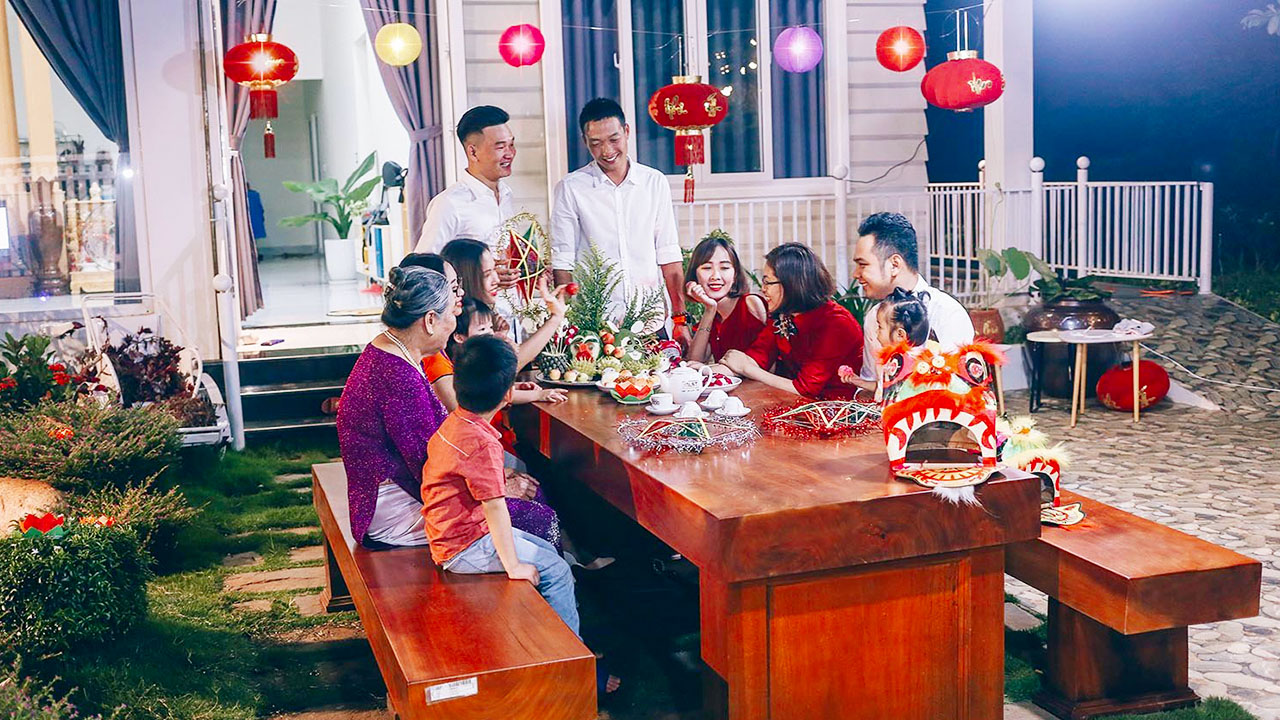
As relatives unite, stories are exchanged, revitalizing familial connections and passing down cultural traditions. This intermingling of the old and young breeds a profound sense of togetherness, where laughter and joy echo through shared experiences. The enchanting ambiance created by moonlight and convivial company becomes the fabric of memory cherished long after the festival ends.
If families have the resources, large reunions can extend into elaborate catering and activities, encompassing younger generations while honoring traditions. In rural areas, gatherings take on a more intimate charm, with families gathering in open spaces to witness the moon’s beauty and celebrate the harvest.
The warmth of familial connections further enhances the festival experience, as love and laughter intermingle. The Mid-Autumn Festival reminds everyone that while celebrations take various forms, the most profound moments emerge when family sits together, hand in hand.
Community Events and Activities
Beyond family reunions, the Mid-Autumn Festival thrives in communal celebration. Local communities come together to organize events that preserve cultural traditions, promote interaction among residents, and immerse everyone in joyful festivities. Colorful parades, lively music, and thrilling performances become the cornerstones of community gatherings throughout cities and villages.
One of the most heartwarming activities during Tet Trung Thu is the lantern parade, where community members march in synchrony, proudly holding their handmade lanterns. This communal spectacle epitomizes the festival’s spirit as families and individuals converge to participate, share, and celebrate their culture, making the night radiant with lights and laughter.
In addition to lantern parades, cities often organize vibrant folk games, enabling families to engage in friendly competition that harkens back to traditional pastimes. These games may include tug-of-war, blindfolded challenges, and storytelling contests that create an exhilarating atmosphere, fostering relationships and community spirit.
The significance of community events lies not just in the festivities but also in their role in conveying and preserving cultural identity. By actively participating in designated celebrations, individuals forge memories and foster a deep understanding of their shared cultural heritage. The Mid-Autumn Festival becomes a canvas for community spirit, bridging gaps and igniting connections from one heart to another.
Special Performances and Entertainment
Entertainment during the Mid-Autumn Festival is a cherished aspect, where performances breathe life into the celebrations. The streets transform into a stage for cultural displays, from traditional music concerts to lively lion dances that enliven the atmosphere with color and vibrancy. Performers, both adults and children, showcase their talents, reviving age-old stories and legends through dynamic creative expressions.
Professional troupes and local communities often engage in lion dances, where choreography captures the audience’s delight. The power and grace of these performances are captivating, as dancers embody the lion’s spirit, eliciting joy and excitement while blessing the spectators. The rhythmic drumming that accompanies these dances sets the stage for a pulsating experience, making it one of the highlights of the festival.
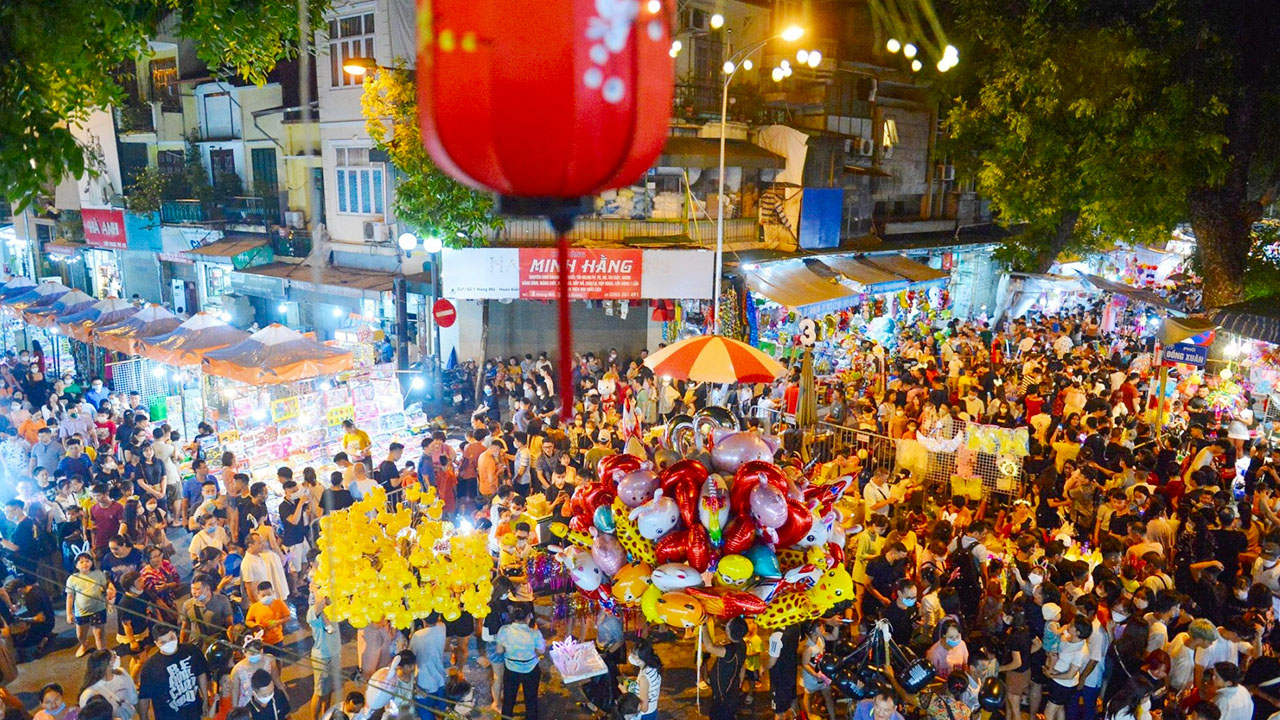
Additionally, local artists frequently put on vibrant theatrical performances, telling age-old legends, such as the tale of Cuội. These productions evoke nostalgia and admiration, reminding audiences of their deeply rooted cultural tales while fostering a sense of pride and continuity.
Music and dance are not limited to public performances; families often engage in private celebrations filled with storytelling and song, sharing lessons of life alongside traditional tunes that resonate through generations. The festival showcases the richness of Vietnamese culture, blending tradition with modernity into performances that reflect communal bond and celebration.
Culinary Delights Beyond Mooncakes
While mooncakes undoubtedly reign supreme during the Mid-Autumn Festival, a variety of culinary delights beyond these sweet treats are also integral to the celebrations, showcasing Vietnam’s rich gastronomic heritage. Families prepare a feast that reflects seasonal bounty and local specialties, creating an atmosphere teeming with delightful flavors.
Aside from mooncakes, the influence of regional dishes becomes prominent, with schools of thought emphasizing street food, snacks, and desserts as choices that complement the festival experience. Vietnamese savory pastries, fresh fruit, and delightful candies can often be found at family gatherings and local markets, providing something for everyone to enjoy. These culinary delights beckon participants with their flavors, arousing a sense of comfort and indulgence.
In various regions, culinary innovations inspired by diverse cultural influences further enrich the festival experience. For example, some communities prepare unique rice cakes molded into animal shapes and dyed in vibrant colors, symbolizing fertility and abundance. Representing an essential aspect of the festival, these culinary creations manifest artistic flair and resonate with meaning.
During Tet Trung Thu, communal feasts replace individual indulgences, reinforcing the importance of shared experiences. Food has a way of creating lasting memories, and the gathering of families sharing meals reflects cultural values deeply embedded in Vietnamese traditions. The holiday transforms into a tapestry of flavors, drawing families and communities closer, enriching celebrations with a culinary journey.
Children’s Festivities and Games
At its core, the Mid-Autumn Festival honors the spirit of children, placing them at the heart of the celebration. The festival is affectionately dubbed the “Children’s Festival,” as children eagerly participate in myriad activities designed to engage their creativity, excitement, and sense of discovery. The blend of cultural heritage and playful enjoyment creates a whimsical atmosphere that amplifies the essence of the occasion.
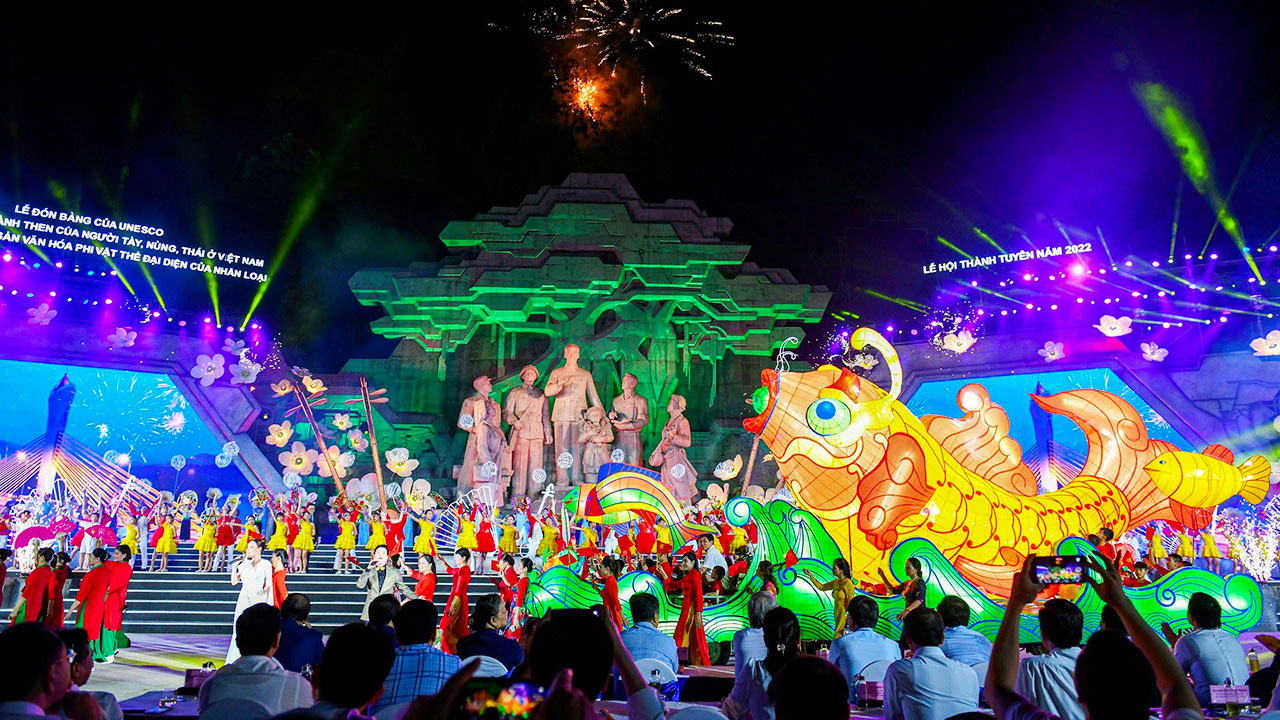
Communities often set up interactive games for children, such as ring toss, pop-up booths, and traditional folklore-inspired activities. These games allow youngsters to immerse themselves in the celebration while fostering friendly competition and camaraderie. Likewise, storytelling sessions, where adults recount legends related to the moon and harvest, provide a rich, imaginative experience, inviting children to dream deeply and learn about their cultural roots.
Furthermore, the evening’s lantern parade provides a magical experience for children, who beam with delight as they walk down the streets, their colorful creations illuminating the night. Parents often encourage their children to join in crafting homemade lanterns, thereby instilling a sense of tradition and pride. This sense of accomplishment fuels excitement, weaving personal touches into the communal celebration.
The involvement of children not only revitalizes traditions but also strengthens community bonds by passing down customs through laughter and play. As they gather with friends and family, children weave smiles and warmth into the fabric of the festival. The Mid-Autumn Festival serves as a vital foundation for cultural heritage, ensuring that the values of teamwork, creativity, and shared joy endure far beyond the day’s events.
Popular Destinations to Celebrate
The Mid-Autumn Festival is celebrated in cities and villages across Vietnam, offering unique experiences that showcase regional flavors and customs. Each locale boasts its own twists on festivities, enriching this remarkable cultural tapestry woven through diverse expressions of celebration.
Festivals in Hanoi
In Hanoi, the capital city, the Mid-Autumn Festival takes on a grand scale. Streets come alive with vibrant lantern parades, lively music, and bustling markets where mooncakes are available in various forms. The Old Quarter’s narrow streets turn into a kaleidoscope of colors, with families exploring the traditional shops selling intricately designed mooncakes and spirited childlike toys, reminiscent of childhood nostalgia.

Landmarks such as Hoan Kiem Lake become crossroad venues for gatherings, where families come to enjoy moon-gazing while participating in games and performances. Local artists often showcase lion dances and traditional music, captivating a diverse audience. This blend of tradition, culture, and youth creates a festive atmosphere throughout the city, allowing cultural traditions to thrive amid vibrant urban life.
Nightly celebrations transform the city into a visual feast, drawing not only locals but also tourists eager to experience this captivating celebration in all its glory. The melding of rich culture and modern energies fosters an enchanting environment that symbolizes Hanoi’s resilience and vibrancy.
Celebrations in Hoi An
The Ancient Town of Hoi An offers a distinctly picturesque backdrop for Mid-Autumn Festival celebrations. Known for its enchanting lantern festival, the city’s cobbled streets are illuminated with colorful hanging lanterns, creating a breathtaking atmosphere. Here, lantern-making workshops invite locals and tourists alike to craft their own lanterns, fostering a communal spirit as families collaborate in the creation of beautiful glowing symbols.

In Hoi An, the festival captures a quaint charm, merging modern-day revelry with traditional customs. Families engage in traditional games, folk performances, and craft activities, allowing visitors a delightful insight into local customs. The riverside atmosphere adds to the allure, with locals floating lanterns on the water, symbolizing hope and making wishes under the moonlight.
Street-side vendors bustle with life, offering a diverse range of mooncakes and regional specialties, immersing visitors in Hoi An’s gastronomic delights. This vibrant amalgamation of culture, cuisine, and community truly embodies the spirit of Tet Trung Thu and showcases the rich cultural heritage lingering within this iconic town.
Activities in Ho Chi Minh City
In Ho Chi Minh City, the Mid-Autumn Festival comes alive with vivacity and urban flair. Streets such as Nguyen Hue Walking Street and Bui Vien burst with life as families partake in festive events, from lively lion dances to engaging children’s performances. This bustling city transforms into an engaging festival ground, inviting people from all walks of life to immerse themselves in traditional customs.

The festival attracts vendors showcasing an array of mooncakes, toys, and festive foods that spotlight the culinary diversity of Vietnam. Throughout the city, local communities organize events that highlight traditional games and cultural performances as children weave through the lively crowds adorned in bright costumes.
Nighttime festivities captivate audiences with the joyous laughter of children running with beautifully crafted lanterns. Ho Chi Minh City embodies the essence of modern cultural celebrations, resonating laughter and communal love. The electrifying experience experienced here serves as a testament to the festival’s significance, blending tradition with contemporary urban vibrancy.
Lesser-Known Local Celebrations
Beyond the well-known cities, Vietnam boasts numerous lesser-known local celebrations that capture authentic cultural experiences. Towns like Tuyen Quang, located in the northern highlands, offer unique local celebrations rooted in rich ethnic diversity. Residents in Tuyen Quang create stunning lanterns that reflect the heritage of the local Tay, Dao, and Hmong communities, showcasing traditional dance and music that enrich the celebratory atmosphere.
These local celebrations are often lesser crowded yet vibrant, as they center around community engagement and mutual respect. Families prepare traditional foods and gather in village squares to enjoy moon-gazing and connect with neighbors, reinforcing a sense of belonging and cultural pride.
Local celebrations often feature folk games that carry stories of their origins while allowing children to embrace their cultural identity through fun and laughter. Participating in such celebrations provides visitors with a heartwarming glimpse of Vietnam’s rich tapestry of traditions that are celebrated at a grassroots level, highlighting the true essence of Tet Trung Thu.
Events in Other Major Cities
In addition to major cities like Hanoi, Hoi An, and Ho Chi Minh City, the Mid-Autumn Festival is celebrated with equal enthusiasm in other notable cities across Vietnam. Cities like Da Nang and Hue offer their own charismatic charms, hosting various events that honor the traditions of Tet Trung Thu.
Da Nang lights up with colorful lantern displays along its coastal venues and public squares, presenting the perfect backdrop for moon-gazing gatherings. Meanwhile, Hue, known for its rich royal history, hosts traditional games, cultural workshops, and mooncake tastings in vibrant settings that invite both local residents and visitors to partake in the festivities.
Participants engage in bright atmospheres filled with music, dance, and laughter, amplifying the festival’s cultural resonance. Regardless of the location, the Mid-Autumn Festival flourishes as a national celebration, fostering shared traditions of moon worship, mooncake indulgence, and community bonding underneath the enchanting glow of moonlight.
Preparing for the Mid-Autumn Festival
The Mid-Autumn Festival is a time for preparing and engaging in cherished traditions, ensuring that families can enjoy the festivities to their fullest. From shopping essentials to planning gatherings, a sense of anticipation fills the air as the festival approaches.
Shopping for Mooncakes and Lanterns
In the weeks leading up to the Mid-Autumn Festival, markets become bustling centers for shoppers seeking the best mooncakes and lanterns. Various vendors arise to accommodate the influx of customers, offering an array of flavors and designs that cater to diverse palates. Traditional mooncakes adorned with elegant patterns and contemporary masterpieces entice shoppers with creative flavors, creating a delightful challenge for families deciding on the best options for their celebrations.

Colorful lanterns of all shapes and sizes fill the streets, capturing the imaginations of children and adults alike. Vendors often showcase star-shaped, carp-shaped, and animal-shaped lanterns that capture the essence of the festival, prompting families to engage in cheerful conversations as they choose lanterns together. Shopping for these items transforms into a shared experience that fosters connection and excitement, uniting the family as they anticipate festival activities.
Moreover, specialty shops may offer handmade goods and unique souvenirs, adding an artistic layer to the shopping experience. Exploring local markets in search of festival items becomes a beloved family tradition, embodying the spirit of preparation that sets the stage for the joyful celebrations ahead.
Planning Family Gatherings
As the festival nears, families begin preparing for reunion gatherings that hold special meaning during the Mid-Autumn Festival. This occasion allows relatives to come together, sharing stories, laughter, and culinary delights that strengthen bonds and enrich relationships.
A lavish spread of traditional foods including mooncakes, fruits, and sweets fills family tables, which serve as offerings during worship rituals followed by communal feasting. During these gatherings, families share the richness of their collective experiences, often reminiscing about past celebrations, crafting continuity between generations and fortifying familial love.
Activity planning for children also takes center stage, as parents orchestrate games, performances, and creative projects to engage their little ones during the festivities. Family members often take up roles in storytelling or participatory games, amplifying the importance of community bonding and imparting lessons of their heritage to the next generation.
The atmosphere surrounding family gatherings during the Mid-Autumn Festival embodies warmth, love, and nostalgia. These cherished moments remind everyone of their roots and cultural identity while fostering bonds that linger long after the festival’s conclusion.
Crafting Homemade Lanterns
Engaging in homemade lantern crafting becomes a delightful way for families to connect before the Mid-Autumn Festival fully arrives. With numerous DIY tutorials widely available, many seek inspiration to create unique designs, allowing each family to personalize the traditional lanterns that will accompany them on the festival night.
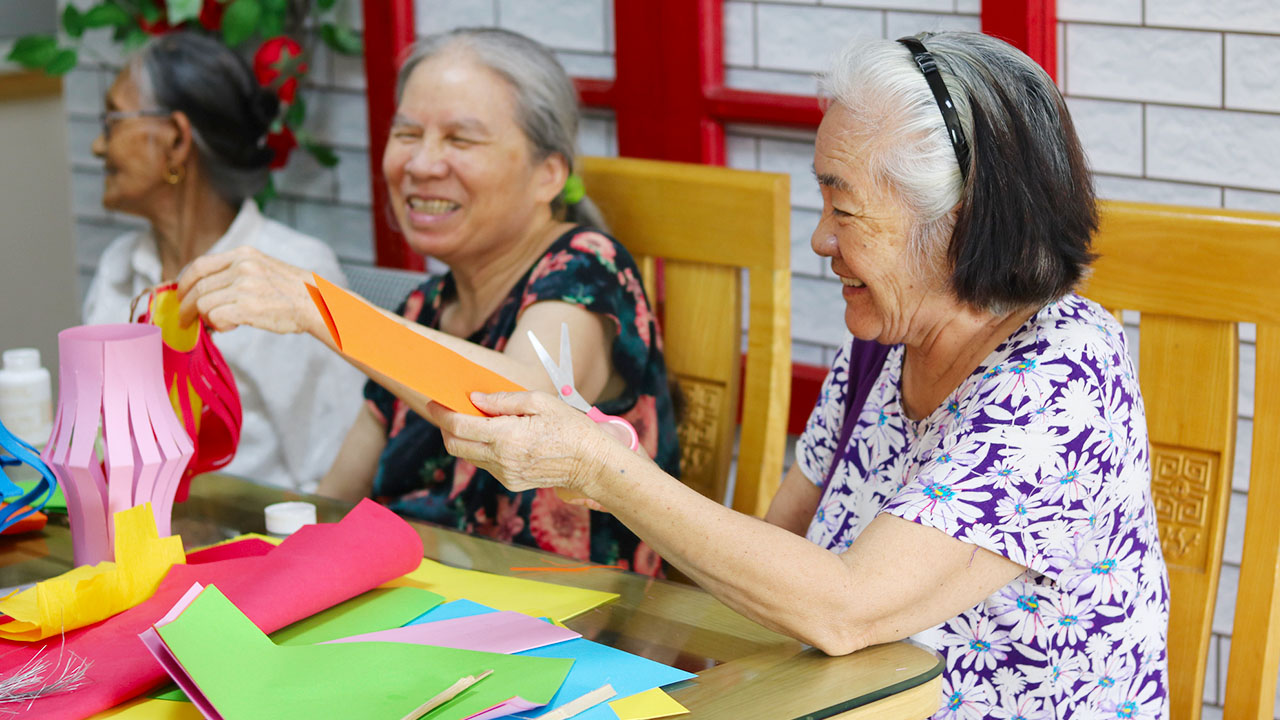
Crafting lanterns can become a bonding experience; family members work together, selecting colors, materials, and styles that reflect their family dynamics and individual personalities. As the family collaborates on this shared endeavor of creativity, it bears the added benefit of reinforcing the significance of tradition to children, encouraging pride in their cultural heritage.
Homemade lanterns serve as beautiful reflections of love and creativity that transcend commercial offerings, representing each family’s distinct narrative. When families parade through their neighborhoods, lanterns glowing brightly, each light embodies the spirit of joy and connection that illuminates the evening sky.
Understanding Festival Etiquette
As families prepare for the Mid-Autumn Festival, understanding festival etiquette becomes an essential aspect of the celebrations. Respecting traditional practices enhances the depth of the celebration while providing context for younger generations.
For instance, etiquette during worship rituals emphasizes reverence toward ancestors, requiring families to express gratitude through carefully arranged offerings of fruits and mooncakes, connected to ceremonial practices rooted in ancestral reverence. Understanding the significance of these gestures fosters appreciation for cultural values and showcases the importance of remembrance.
Participants are also encouraged to exhibit respect toward communal celebrations, whether by contributing to group activities or engaging positively with fellow attendees. The festival brings together individuals from various backgrounds, creating opportunities for cultural exchange and lasting connections. As guests and hosts alike understand the essence of shared respect, an environment of warmth and inclusion prevails.
Tips for Tourists Participating in Celebrations
For tourists eager to join in the vibrant festivities of the Mid-Autumn Festival, it is essential to embrace cultural nuances to fully appreciate the experience. Here are several handy tips to ensure a meaningful celebration:
- Learn Basic Vietnamese Phrases: Familiarize yourself with common Vietnamese greetings and expressions related to the festival, imparting enhanced interactions with locals and embracing the cultural atmosphere.
- Engage in Local Markets: Visit markets where traditional mooncakes, lanterns, and festival treats are sold. Be open to trying various flavors and asking vendors about the heritage behind their crafts.
- Participate Actively: Whether it’s joining a lantern parade, taking part in a lion dance, or playing traditional games, immersing yourself in local activities will provide an enriching experience.
- Respect Cultural Traditions: Be mindful of cultural practices such as moon worship and ancestor offerings. Observing rituals respectfully demonstrates appreciation for local customs and traditions.
- Share in the Festivities: Engage with families celebrating the festival. Many locals welcome tourists to join in their celebrations, offering a glimpse into the warmth of Vietnamese culture.
The Mid-Autumn Festival in Vietnam transcends mere festivity, becoming a tapestry of tradition, joy, family, and community. As it thrives within the collective spirit of the Vietnamese people, the festival resonates not just in Vietnam but also wherever hearts are open to the beauty of the moon and the magic of being alive. The connections formed during these celebrations contribute to the lasting legacy of cultural heritage intertwined with love, gratitude, and unity. Whether through the laughter of children under the moonlight or the bustling streets filled with joy, the Mid-Autumn Festival remains an emblem of beauty and light that resonates deeply within the Vietnamese spirit.


